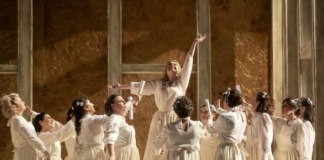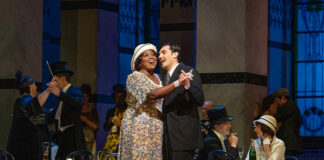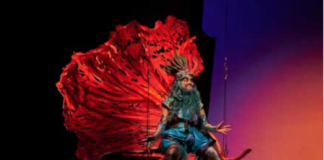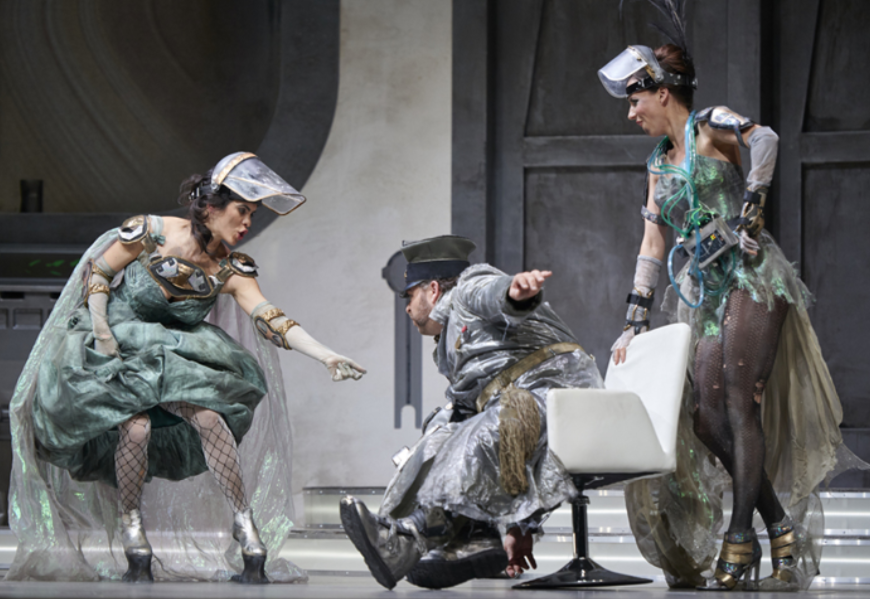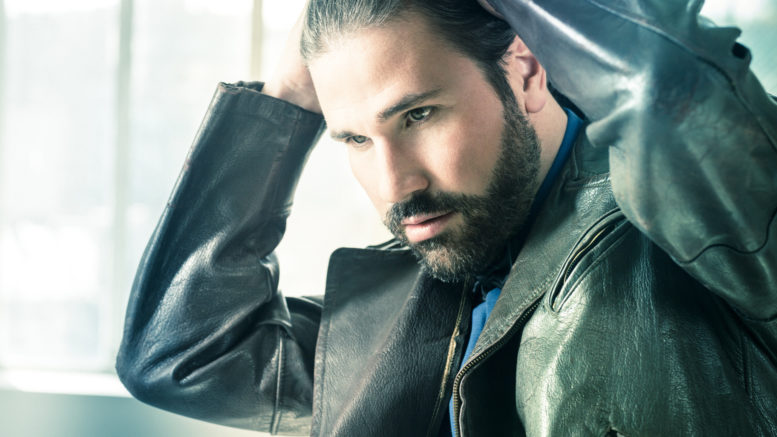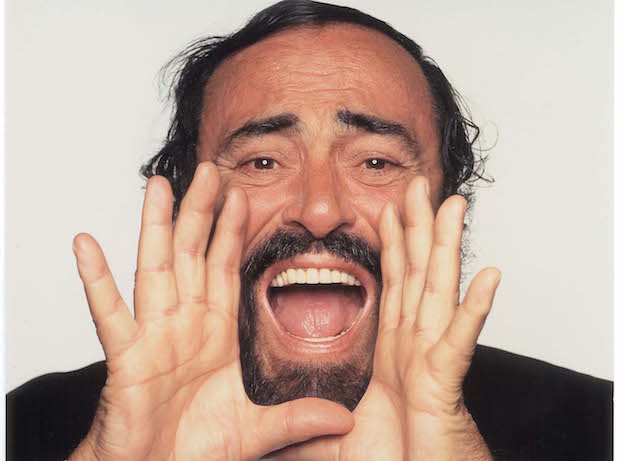
What if we change the popular way of staging one of the most emotional Puccini’s operas? Instead of showing the artificial world of Parisian Bohemians, experience the journey through the distant memories of an old, a little bit forgotten man? Lindy Hume (director) tried to make “La Boheme” not only the beautiful picture, but furthermore- meaningful and pathetic image.
Freshly reneved Staatsoper Berlin invited one of the greatest singers to take up the main roles. Angela Gheorghiu as Mimi, and Piotr Beczała- Rodolfo. And that was a perfect choice. Taking advantage of the impressive acoustics, soloists sounded bright and strong. Their duet- “o soave fanciulla” was not only a beautiful scene, but a piece of amazing music too. Voices sounded together really well, giving the audience a whole palette of different colors and emotions. The staging was impressive too. Mimi and Rodolfo, standing in the room, suddenly changed into a drifting floe (on the “ocean of memories”), which floated out of a stage, leaving waltzing pairs on it…
The idea of making “La Boheme” a picture out of a memory of an old man, staging kind of “reminiscences” sounded interesting. And it was so. Hume tried to show the journey through the memory of an old man (appearing on stage from time to time). We saw a “box” scenography- a part of the room in the middle of the stage. Interesting part was also the way in which soloists appeared on stage- walking out of coulisse (being visible to the audience) and entering the “main stage”- the room. Like if they were appearing like living memories. The drifting floe (mentioned before) was intriguing too, but if only somebody“teared” the scenography a little bit quieter… Hume created a Leitmotif of the dance- Waltz. It was out of her personal experience- her grandmother which loved dancing and that kept her moving and living forward in joy and memories. She tried to “smuggle” it to her staging of Puccini’s masterpiece. A little bit more of dance and “cultural life” was staged in the scene with Musetta. She was like a club Diva, gaining the audience’s eyes (and admiration). That was the most colorful part of the performance, a little bit detached from the rest. Then we have an old train station, old people waiting for their train. A great contrast.
And the last scene- one so impressive and meaningful, staged in a really minimalistic form. The scene of Mimi’s death. We come back to the room from the beginning of the opera. But now- destroyed, abandoned. An old armchair, in which sat the old man at the beginning, now- occupied (armchair) by Mimi. And the last bars, beautiful picture- Mimi, Rodolfo, blue light, slowly disappearing in the darkness with closing curtain. That was a quintessence of Puccini’s La Boheme. Simple, but strong emotions, truth and meaningful music.

Without any doubts- there were the singers who made that La Boheme so emotional and fulfilled the director’s ideas. They were the strongest part of that performance. Beczała sounded wide and strong, although a little bit insecure beginning. His “che gelida manina” made a great impression on the audience. His voice was soft and bright and acting- really convincing. In case of Gheorghiu- that was undoubtly exceptional vocal performance. Long-breathed phrases, like in “si, mi chianano Mimi”, beautiful dynamics- developed crescendo or perfectly hold pianissimo. Her “Donde lieta usci” was a great example of leading and developing the phrase as well as delivering and gradating the emotions. Gheorghiu’s Mimi was really fresh and young at the beginning, changing to an old, but still hopeful woman in the last two acts. She showed her perfect acting abilities as well as strong, colorful and emotional voice. Those two (Gheorgiu and Beczała) were the brightest stars of the performance. But the rest of the cast must be noticed too. Grigory Shkarupa (Colline), Russian bass, sounded wide and strong, giving his character a lot of grace and truth. The same was with Baritone- Alfredo Daza. His Marcello was convincing and “fresh”. Anna Samuil in the role of Musetta showed really nice acting skills and vocal technique. Her voice was a little bit darker and heavier than in case of other Musetta’s performances (by different singers), but her coloratura was pretty impressive. The Staatsopernchor (choir) made that performance full and complete the work (vocally). Voices sounded full and in this acoustics, could show their power and abilities.
The orchestra leaded wisely by Julien Salemkour was a really strong part of the performance. It was a pleasure hearing how orchestra interact with soloists. Salemkour assisted, accompanied the singers, when needed- decreasing the sound of the orchestra, or making forte, which was equal to the voices. It could be felt, that he understands Puccini’s music and tries to make the best of it. To deliver the emotions, that emotional outbursts, as well as long soft pianos, or “musical paintings”, so characteristic for that Italian composer.
That evening got a great round of applause. After such an emotional ending of the performance, the audience was astonished. Gheorghiu and Beczała, then- the rest of the cast, were appearing on the stage couple times, getting increasing applause. Undoubtly that La Boheme was highly appreciated by the Staatsoper’s audience.
Katarzyna Kubińska





